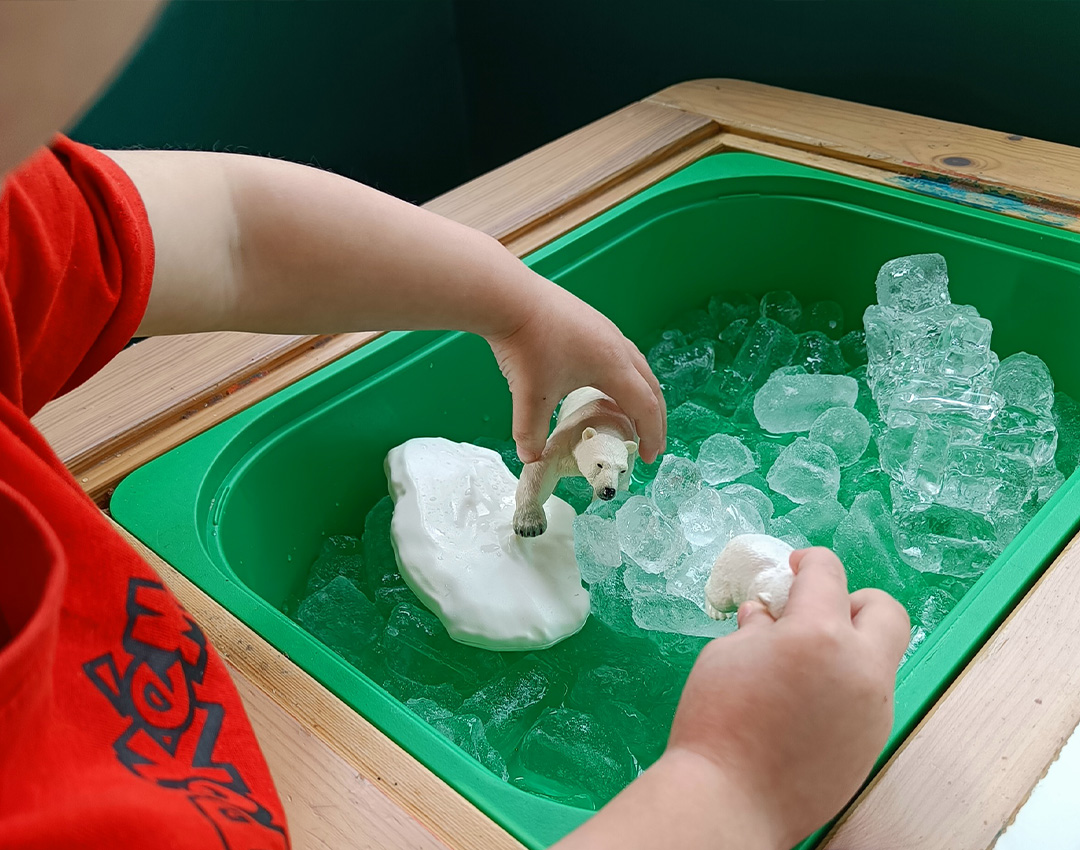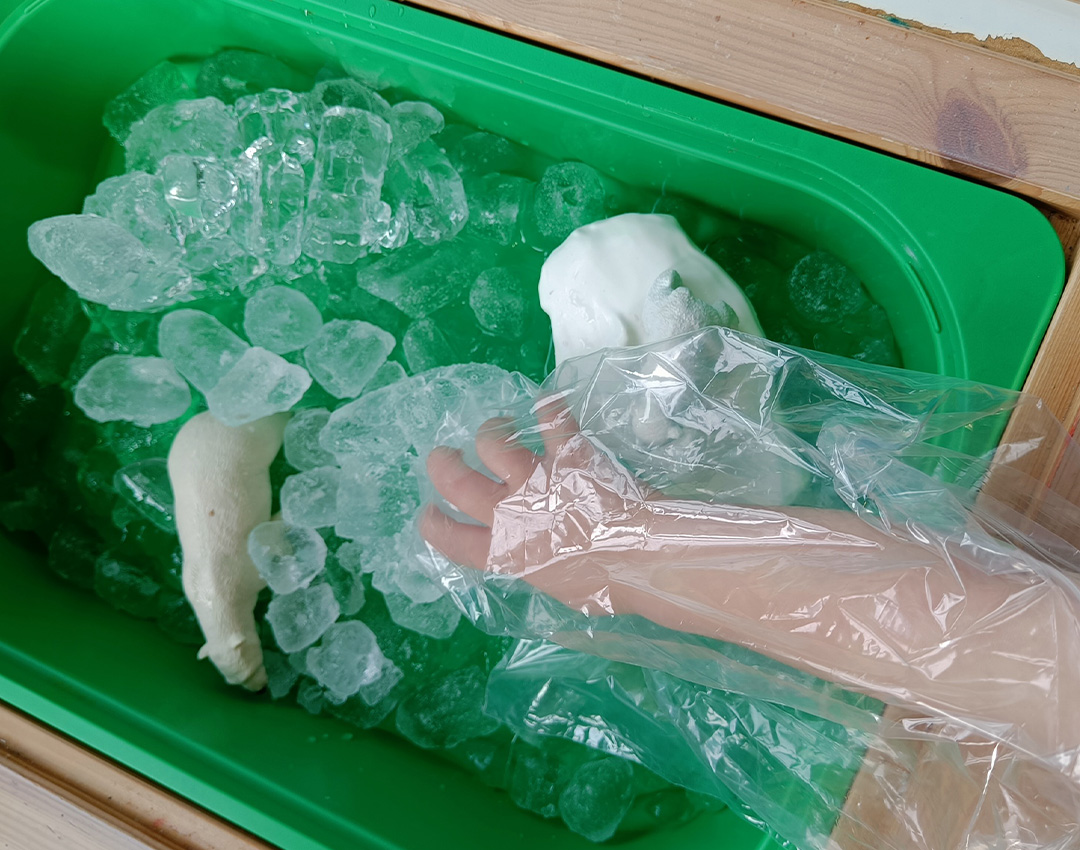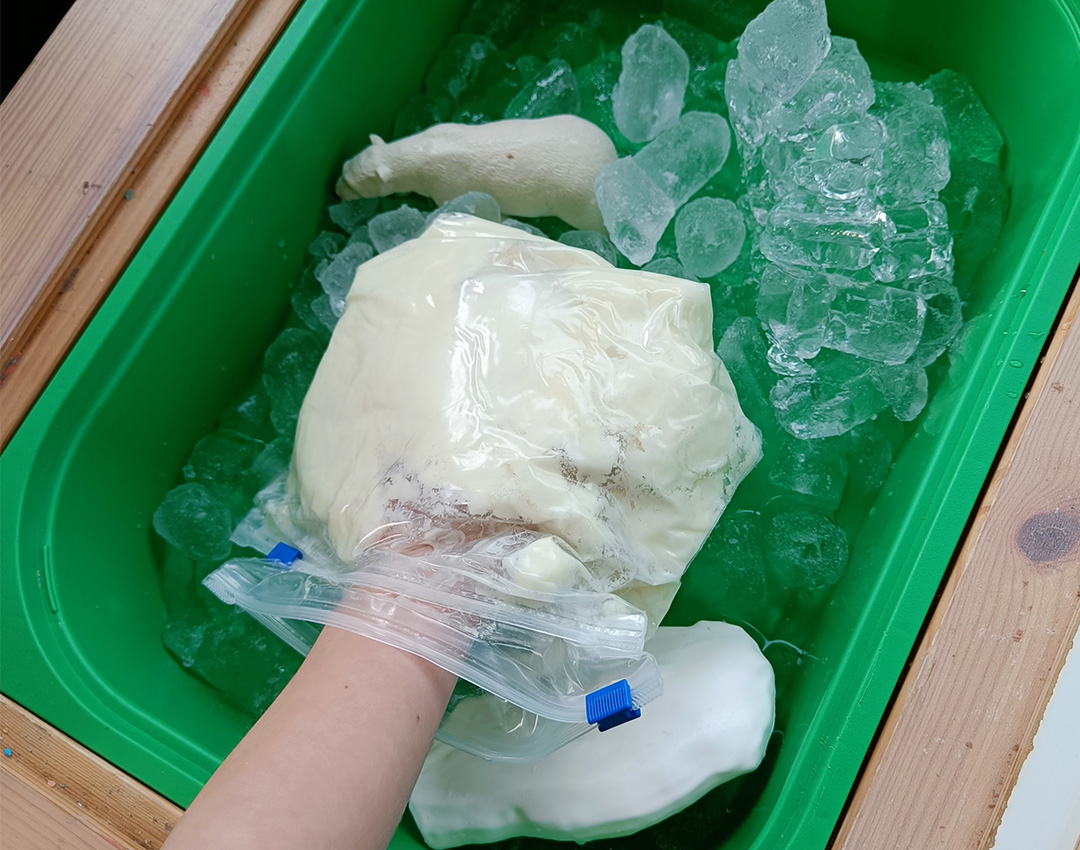Exploring how marine mammals stay warm
How do marine mammals keep warm?
Marine mammals like seals, polar bears, and whales have a thick layer of fat beneath their skin called blubber (also known as adipose tissue). This layer covers the entire body of these animals, excluding their limbs like fins, flippers, or flukes.
Blubber serves several important functions for marine mammals:
- Keeps them warm in cold environments
- Helps them store energy
- Assists with buoyancy (helps them float)
Migratory whales rely on their blubber when they travel between rich feeding grounds and nutrient-poor breeding grounds. Whale mothers will continue to fast after their babies are born, using stored energy from their blubber.
Bowhead whales have the thickest layer of blubber—up to 19 inches thick! They live in polar waters, some for as long as 200 years.
What’s the experiment?
This simple experiment allows children to explore how effectively blubber keeps the body warm in cold temperatures. By creating a “blubber glove,” kids can directly experience the insulating properties of fat.
We made our blubber glove with two sandwich bags and some vegetable shortening (Trex), then used a single bag with no insulation as a comparison.
Give little ones time
It took a moment for Little O to understand the experiment. He switched between the blubber glove and the non-insulated glove several times. After a few attempts, he quickly realized how much warmer the blubber glove kept his hand and wanted to continue playing with the ice using it.
The only downside was that it’s quite difficult to pinch or grab ice with the double-layer bag.
What you will need:
- 3 sandwich bags/small plastic bags
- A bowl or sensory tray
- Bag of ice
- Polar animal figures (optional)
- An old towel or two to catch spills
- (Optional) Science experiment worksheet
Instructions:
- Place shortening into one bag and spread it so it covers the inside surface.
- Open this bag and place another bag inside, making sure the shortening surrounds the inner bag.
- Fill a sensory tray with ice and add polar animal figures if desired.
- Place both the blubber glove and a regular bag (without shortening) beside the tray.
- Have your child try placing their hand in the regular bag first and touching the ice.
- Then switch to the blubber glove and feel the difference!
What we did:
First, I showed Little O some quick video shorts about polar bears while he ate breakfast. We started to talk about how they kept warm in the cold. Since he has a short attention span, I kept the explanation short and concise.
Later, I set up a sensory tray at his table filled with ice, polar bear figures, a play ice float, and the two gloves. The animal figures are optional, but for Little O, these helped give the experiment context.

I placed each glove next to the ice tray so he could switch between them easily. Little O chose to use the non-blubber glove first.

Little O, only has small hands so I used smaller sandwich bags to make my blubber glove. It’s currently in the fridge waiting for Big O to get home from school to use.

Results
As mentioned earlier, it took Little O a while to understand the purpose of the experiment. Repeating it a few times helped him grasp the concept. Once he realised how much warmer his hand was in the blubber glove, he didn’t want to stop using it. The experiment clearly demonstrated how effectively the layer of fat helps keep the body warm.
What to do after
After our experiment, we discussed how blubber works to keep polar bears warm. I also mentioned how other marine mammals like whales and seals have blubber for insulation.
Extension for older children
For older children, use a science experiment worksheet to record observations, predictions, and results. This helps develop scientific recording skills and encourages more detailed analysis.
You could also increase the number of variables by using the same method for the glove but with different fillers, such as:
- Polystyrene packing
- Feathers
- Cotton balls
- Fabric scraps
Did you know it’s International Polar Bear Day on the 27th February?
Polar bears international founded the day to help raise awareness of the increasing struggles and threats polar bears face. You can find out more here: https://polarbearsinternational.org/act-now/awareness-events/international-polar-bear-day/
